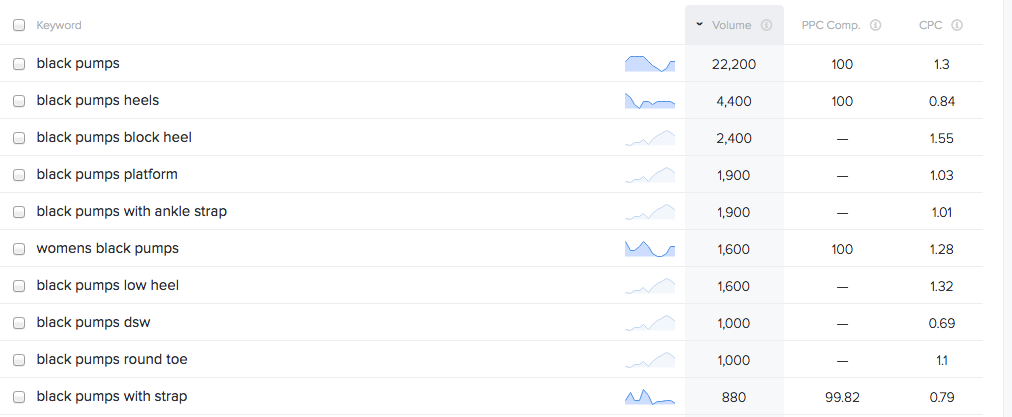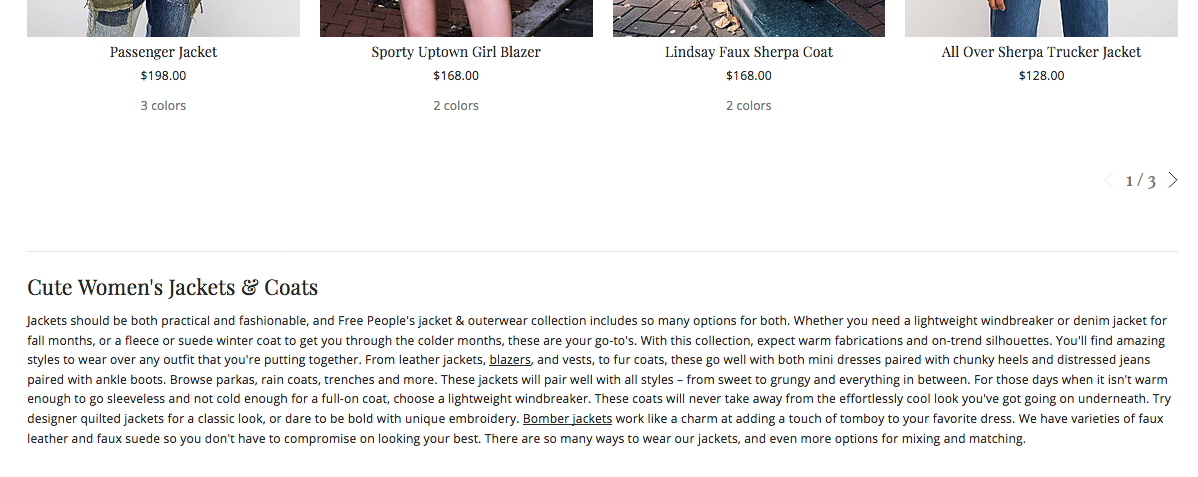Are you doing everything possible to push your product pages to the top of the search engine results? Are you hoping to generate more organic traffic from these pages, but unsure of where to start?
There’s no denying the fact that the e-commerce space is more competitive than ever before.
While competition is high, there are more than 200 million digital shoppers in the United States alone. This means one thing: the opportunity for e-commerce success is great.
Of course, there is more to success online than creating product pages and hoping for the best. If you want to make the most of your online store it’s critical to focus on all aspects of marketing and advertising, with a heavy emphasis on search engine optimization (SEO).
So, this leads to an important question: what’s the best way to optimize your product pages for SEO?
You’ll come across a lot of different answers. You may even come to the conclusion that it’s too much work. But don’t give up just yet. Below, you’ll find a simple four-step process for optimizing your product pages with the goal of generating more search traffic.
Keyword Research
You can spend as much time, money, and resources as you want to optimize your product pages, but if you don’t focus on the right keywords it’s all for not. It’s harsh but true.
Your first goal is to answer this question: what are the right keywords?
It’s tricky because what’s right for you may be wrong for another company, even if you’re in the same industry. Turn your immediate attention to three things:
- Keywords that closely align with your product pages
- Keywords that get searched
- Keywords with the highest conversion potential
For example, if you’re selling “women’s black pumps” you’ll want to consider keywords such as:
- Women’s black pumps
- Black pumps
- Women’s black pump shoes
The Wordtracker keyword tool can help you narrow your keyword list, with the idea of settling on those that are the best match for your product pages.
Sticking with the example above, here’s what you’ll see:

While this is the top 10 keywords, ranked by volume, there are 700+ others to consider.
The more keyword research you conduct the more information you’ll dig up. It’s critical to take your time as to consider every opportunity.
It’s natural to focus most of your attention on high volume keywords. Using the example above, “black pumps” receives approximately 22,200 searches per month.
Even though this number is greater than any other on the list, as a generic keyword it may not send the most targeted traffic to your website.
Instead, optimizing for a keyword such as “black pumps round toe,” which only gets 1,000 searches per month, might be the better option. The volume is less, but it’s likely to generate more targeted traffic.
If you’re going to optimize for a generic keyword, do so on your “collections pages.” In this example, a collections page would be one that houses all the black pumps that you sell.
Then, for each page within that collection, you can select a more targeted keyword.
Title Tag
Now that you’ve conducted keyword research, it’s time to put all that data to good use. There are many ways to use these keywords, but it all starts with your title tag.
Here’s an example of an effective title tag:

Take notice of the following:
- Use of the primary keyword “women’s winter coats”
- Use of the secondary keyword “jackets”
- Include the brand name (Burlington)
- A call to action – Free Shipping – to attract clicks (without going overboard)
You want your title tag to include your primary keyword, as well as a secondary keyword if possible.
What you don’t want to do is stuff too many keywords into the title tag, as this appears spammy to both the search engines and your target audience.
Tip: optimizing for SEO is important, but your primary goal is to drive traffic to your site. For this reason, balance your SEO and CTR (click through rate) efforts. These two things must go together hand in hand.
Also, every product page should have a unique title tag. Taking this one step further, don’t use a template to create similar tags for multiple pages.
Here’s what you’re trying to avoid:
- Red Women’s Sweaters – Brand Name – Free Shipping
- Black Women’s Sweaters – Brand Name – Free Shipping
- White Women’s Sweaters – Brand Name – Free Shipping
The only difference between each title tag is the color. This approach will save you time, but it can also hold you back from achieving top rankings.
Meta Description
The first thing you need to know about meta descriptions is that search engines no longer use these as part of their ranking algorithm. They did in the past, but this isn’t a consideration in today’s world.
But even though your meta description has no direct impact on rankings, it can indirectly impact traffic to your website. Here’s how:
- Well thought out, informative meta descriptions can increase your click-through rate
- When more searchers click through to your website, the search engine recognizes its importance, which can lead to a ranking increase
Adding to the above, there are four things you should try to do with each meta description:
- Include one to two keywords (in a natural manner)
- Include a call to action with the goal of improving click-through rate
- Don’t exceed the 300 character limit (anything over this will be cut off)
- Create a unique meta description for each product page
Check out this example:

In addition to multiple high-value keywords, this meta description is concise, unique, and includes a call to action.
More is not better when it comes to meta descriptions. Get to the point!
On-Page Content
Many e-commerce stores make the mistake of overlooking the importance of on-page content. They share multiple images, pricing details, and maybe a link or two of text.
What they don’t include, however, is high-quality content that provides more details. With this on your page, you’re likely to have a leg up on your competition.
Here’s a simple example:

The things to pay most attention to include:
- Strong title with the use of the target keyword
- Keywords sprinkled throughout the content (but not too heavily)
- 250+ words of valuable and actionable content
- Internal links
The biggest mistake you can make with on-page content is adding it just for the sake of doing so. This won’t do you any good. In fact, if it’s low-quality content it could work against you in regards to ranking your site.
Take the time to plan out every page and then create unique content for each one. Don’t use a template with which you change a few words, as this leads to duplicate content that can result in a penalty.
There’s no denying that adding several hundred words (or more) of unique content to each product page will cost you time and money. However, if you truly want to rank your pages at the top of the search engines, it’s a step to strongly consider.
[Case Study] Driving growth in new markets with on-page SEO
Avoid Duplicate Content
As the number of product pages on your website grows, it’s natural to cut corners in an attempt to save time. Unfortunately, this often leads to the use of “templates,” thus resulting in duplicate content.
For example, you can save a lot of time by using the same 300 word template for the on-page content of each product page. You believe that changing the title and keywords is enough to make the content unique, but search engines see something else. They see duplicate content.
Duplicate content is a big issue in regards to product page SEO. It’ll save you time, but it’ll more than likely cost you the opportunity at reaching the top of the search engines.
It takes more time and effort, but make sure every title tag, description, and piece of on-page content is 100 percent unique.
Conclusion
With so many online stores fighting for the top spot, you need to do everything right.
The four points above should give you an idea of where to start. As you review each product page, don’t hesitate to make changes as you see fit.
There may be tens of millions of online stores to compete with, but the right SEO strategy can help you reach all your goals.
What do you consider to be the most important element to optimizing your product pages for SEO? Would you add any tips to those above? Share your personal experiences and feedback in the comment section below.

